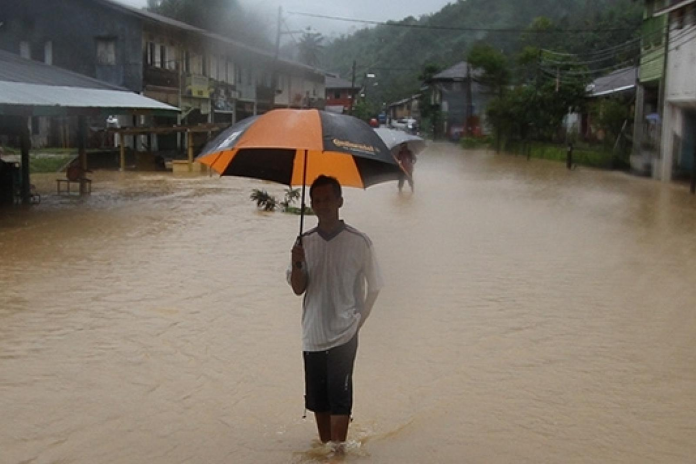By Knollis Delle
Nearly 40 million children face disruptions to their education annually due to climate-related disasters, a figure that continues to surge. The toll is both immediate and long-lasting, with a staggering 43 million children internally displaced over the past six years alone as a result of extreme weather events – equating to approximately 20,000 child displacements every single day.
Climate-driven displacement creates formidable obstacles to accessing and completing education. Research shows that student performance plunges, generally one to two years after a natural disaster strikes, with the most significant learning setbacks impacting students who are already affected by poverty.
In addition, a scorching reality looms, as 559 million children are currently exposed to frequent and extreme heat waves. This number is projected to skyrocket to a staggering 2.02 billion children worldwide by 2050.
Education ministers, senior government officials and other stakeholders met for the 22nd Conference of Commonwealth Education Ministers, on 16 and 17 May 2024, and ‘resilience’ was one of the central themes. This is apt, as there is an urgent need to fortify education systems against the mounting challenges posed by climate change and other global disruptions.
Understanding the challenges and opportunities
Small Island Developing States (SIDs) and other vulnerable states are often disproportionately affected by climate change due to their geographical location, limited resources, and fragile ecosystems. Rising sea levels, extreme weather events, and erosion are just some of the manifestations of climate change that endanger school infrastructure in these vulnerable regions.
Weak structures, lack of proper drainage systems, and unsuitable building materials exacerbate the susceptibility of school buildings to damage or destruction during hurricanes, floods, or cyclones. Consequently, the disruption of education becomes inevitable and jeopardises the future of our young people.
The 2022 monsoon floods that affected Pakistan is reported to have disrupted education access for over 3.5 million children. Six months after the disaster, an analysis by the World Bank revealed that an estimated one million children were still out of school. In 2019, Cyclone Idai affected the education of over 305,000 children in Mozambique.
Resilient infrastructure could reduce impact
A report published by UNICEF, on the recovery efforts after shocks, noted the role of investment in climate-resilient infrastructure. The report asserts that investing just $1 in climate-resilient infrastructure could result in savings of around $4 in funds used to rebuild after a disaster.
Building a climate-resilient education system hinges on a two-pronged approach:
- Strengthening infrastructure and greening the education system. This involves investing in durable school facilities and remote learning tools; and
- Training teachers on climate change, infusing environmental topics into the school curriculum, and supporting research on local resilience measures.
Climate finance can provide much-needed resources
Climate finance, a mechanism aimed at mobilising funds to address climate change mitigation and adaptation efforts, holds immense potential in bolstering the resilience of school buildings and education systems. By providing financial resources, both from domestic and international sources, climate finance could facilitate the implementation of sustainable infrastructure projects tailored to withstand climate-related hazards.
In 2019, the Commonwealth Climate Finance Access Hub (CCFAH) supported the Government of Saint Lucia in developing a proposal that led to the award of a technical support grant of US$200,000 from the Climate Technology Centre and Network (CTCN). The support was used to strategically evaluate the climate-related risks faced by school buildings that serve as emergency shelters to enable the government to assess potential measures to improve these facilities.
Subsequently, CCFAH has supported proposal development and fundraising efforts in other countries such as Zambia and the Solomon Islands to fund resilience measures such as installing flood barriers, improved ventilation, heat-reflective roofing and the installation of solar panels. These interventions also explore broader solutions, including facilitating the transition to sustainable practices, the development of outreach campaigns and procuring early warning systems for disaster readiness.
Amidst challenges of limited financial resources in developing countries, climate finance can provide the much-needed funds to support the development and implementation of climate adaptation strategies in the education sector, especially for capital-intensive projects. Some of which may be beyond the financial capabilities of many educational institutions or government budgets.
To complement traditional climate finance mechanisms, the Commonwealth Secretariat is exploring the potential of leveraging parametric climate insurance powered by blockchain technology in Fiji. This innovative approach aims to provide climate-vulnerable countries with predetermined payouts upon the occurrence of pre-defined climate events, such as extreme rainfall or temperatures.
The integration of parametric insurance and blockchain technology could help ensure timely and transparent financial assistance to support climate resilience efforts, while minimising administrative burdens and fostering trust through the inherent transparency and immutability of blockchain-based systems.
Knollis Delle, Assistant Research Officer, Climate Change





